 Facebook
Facebook
 X
X
 Instagram
Instagram
 TikTok
TikTok
 Youtube
Youtube
!["[Y]ou can spend years building your reputation. And you can destroy it in one day." - Image by Andy Boyd](https://media.sandiegoreader.com/img/photos/2017/03/06/microscope_t670.jpg?b3f6a5d7692ccc373d56e40cf708e3fa67d9af9d)
“I have to kill all of my cells.” In the weeks leading up to Christmas break, Dr. Christie Eissler talks about shutting down her experiments at the Zhou Lab in the Ludwig Institute for Cancer Research at UC San Diego before heading home for the holidays. Eissler is 34. She finished her undergraduate work in biology at Northern Illinois University, and she earned her PhD at Purdue. She lives in the UTC area with her boyfriend, also a scientist. She works as a postdoctoral research scientist for a UCSD professor.
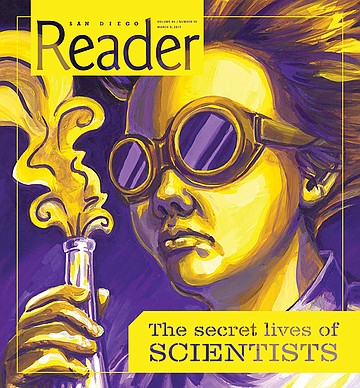
Home is a suburb of Chicago.
“The cells won’t live while I’m gone. They’re human tumor cells. They live on media,” which she explains is a substance used for growing different types of cells. Eissler’s friendly and quick with a smile. Midwestern vowels shape her speech. On the drive over to where we meet, she’s somehow nicked her chin.
Does she think that her laboratory cells, such as they are, know they are being executed?
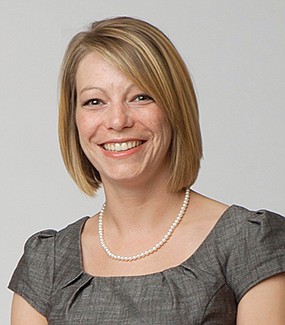
“That’s the big question, isn’t it? Defining intelligence? The individual cells don’t have the ability to think or feel but, they do have ways to communicate with one another and respond to the environment. They definitely know when other cells are around.”
She dabs at her wound with a scrap of paper towel.
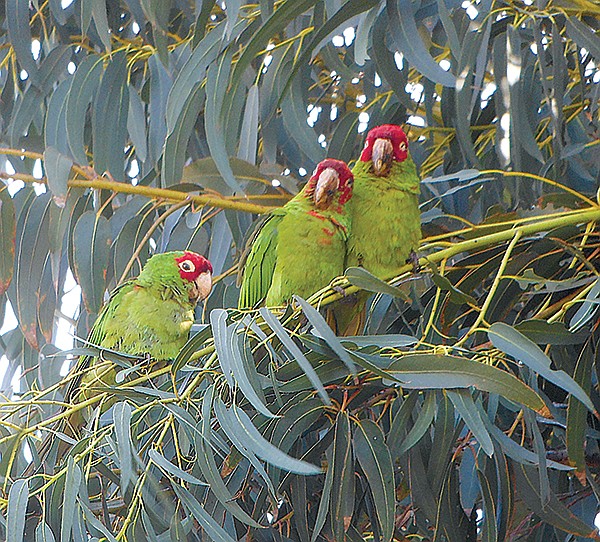
“Does it bother me? Yes,” she says with emphasis. Then she says,“It smells really bad when you kill them.”
What does she use?
“Bleach.”
The campus at UCSD is a maze of nondescript edifices the dull gray color of cement with discreet signage and a shared address (9500 Gilman Drive), an occasional greenbelt, and almost no parking. The Zhou laboratory shares space with two other laboratories within the dignified exterior of one of those gray buildings. It is a lair not open to the public. One passes escorted through secure portals into a huge open space crammed with shelving and work benches and into a general low humming of concealed machinery and talking.
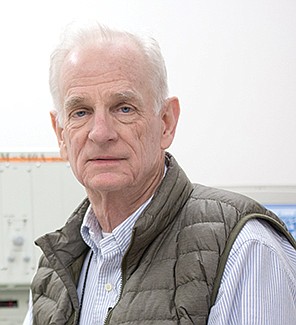
“My lab is very loud,” Eissler says. “There’s always some discussion going. There are three post docs working here, one grad student, one staff scientist, one technician, my professor, and five undergrads. For every opening, there are maybe 300 applicants. And these are really smart people.” They are members of a union that was put in place to end the low pay for long hours that many post docs faced in the past. “The United Auto Workers started a union for us while we are working in the UC system,” says Eissler. “It costs $10 or $20 a month.”
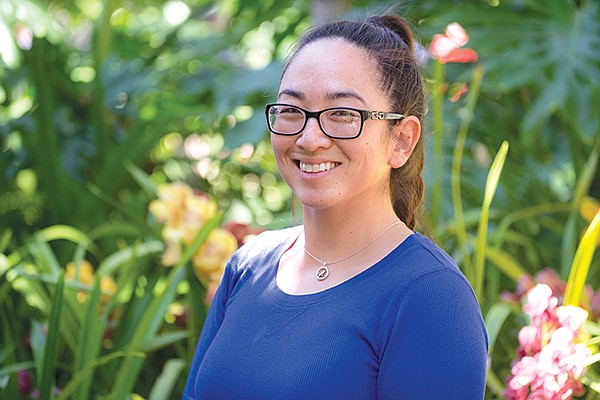
White-ish shelves overflow with glassware and beakers that would look familiar to anyone who had one of those childhood chemistry kits, but on a larger scale. The people who work here don’t exactly look like scientists, either. Jeans, tennis shoes, and T-shirts are the norm. The white lab coats only come out of the closet when an experiment is in progress. Eissler’s doomed cells (in this case, colon cancer cells harvested from a patient long since deceased) served a larger purpose than living in a temperature-controlled incubator and consuming media. She describes her work day: “I amplify DNA, meaning that I make a bunch of copies of one particular strand. And then I try to edit a gene. I try to make a mutation. The process is called crispr — cas9. And I look at maybe 500 single cells, and [the desired mutation] doesn’t happen in every cell.”

She talks about a time when all 500 such attempts failed to produce any results.
“And that took weeks of work. The way I designed the experiment didn’t work.”
Are failed experiments a cause for termination? No. She explains that failed experiments are part of the process. “And, I just signed a new contract for a year, so I know I’ve got that.” But given the depth and the size of the research climate here, odds are good that she could find work as a scientist in San Diego if and when the need arises.
“The reason [biotech] companies are here is due to the big talent pool. A lot of post docs [that’s what newly minted PhD recipients are called in the trade] come here, and they don’t want to leave.” Eissler would like to put down roots here, maybe buy a house. But without her boyfriend’s salary, she says that would not be possible. “You plan your life two years at a time. If I lost my job tomorrow, we’d be moving if my contract wasn’t renewed.”
Biotech Beach: no one knows who coined the term, but somewhere along the line, that’s what scientists began calling the spread between Sorrento Valley and La Jolla, where most of the research labs are. Biotech Beach has its own Facebook page and a Twitter handle. And why not? Along with Boston, San Diego is one of the top life-sciences markets in the world, according to data collected by the Economic Development Corporation:
“The region has more than 1,100 life sciences companies and more than 80 research institutes. The research institutes — along with University of California San Diego, San Diego State University and other major universities in the region — provide the sector with breakthrough technologies that fuel company growth and product development.”
The list of major pharmaceutical companies in San Diego include such names as Pfizer, Johnson & Johnson, GlaxoSmithKline, and Merck.
Biotech Beach runs for the most part on grants awarded by the National Institutes of Health. According to the National Academies Press, the organization supports over 80 percent of federally funded biomedical research. Their budget currently exceeds $28 billion. The other major funders of biomedical research include pharmaceutical, biotechnology, and medical equipment industries.
“Every scientist,” says Dr. Huilin Zhou, “has to apply for grant money. There are a lot of scientists, so there has to be a competitive mechanism in place.” That system, he says, is peer review. “Other scientists will be reviewing the grant applications and then choosing based on merit. There needs to be a system.”
Zhou is Christie Eissler’s boss. This is his lab. Is he ever anxious about the application process? “In today’s climate,” he says, “everyone will be nervous. The government support has kind of been restricted due to the financial situation of 2008. That makes it harder for people who want to pursue a career in research. But it’s a fair system. If we have done well, then we will be rewarded.”
Does he think the pressure to obtain grant money increases the need to falsify data?
“Yes. Probably. There will always be those kinds of things. But the system will cleanse itself out. If the findings are not repeatable, we will find it. Scientists, and not the New York Times,” he says, “review other scientists.”
Still, it happens. Last year, the U.S. Department of Justice reported that a former UCSD research professor named Dr. Homayoun Karimabadi, (he was also the chief executive officer for SciberQuest, Inc.) was charged with fraudulently obtaining government grants and contracts.
In 1994, according to a Los Angeles Times article, the University of California paid $1.6 million in a settlement stemming from charges that a former researcher had faked results in a federally funded project. And nearly a decade before that, a UCSD faculty member named Robert Slutsky, says the Los Angeles Times and ScienceMag.org, was likewise caught fabricating research data.
“When I was a grad student,” Zhou says, “my advisor told me that you can spend years building your reputation. And you can destroy it in one day. It’s very unlikely that scientists will do this.”
In years past, it was venture capital, meaning private investment, that drove a lot of the growth of the biotech industry. “But venture capital has changed a lot,” says bioengineer Herbert Radisch.
Radisch operates a medical devices research-and-development facility in Sorrento Valley. Venture capitalists funded many startups such as his in the past. “But now, for companies like ours [medical device companies], it’s almost impossible to get.” Radisch explains that access to investor dollars often depends on a company’s having a proven track record of success, or, having a doctor with big clout onboard. “It all changed around 2000,” he explains. “Venture wants to go into future unicorns now, and most of that is software-based, not medical devices.”
Radisch is a veteran of the business, having designed or co-developed a number of medical devices. “Biocept and IVT, those were our venture situations,” he says of two San Diego bioengineering firms. “When you get the funding, goals have to be met on a certain timeline. And as a result, you spend a lot less time working on fundamental problems that might help with the future. All the effort goes into short-term goals. And if you have to build a prototype that’s not perfect but that meets the goal, so be it. The concept being that you’ll fix it in the next generation.”
R&D is a long haul. Radisch launched a project in 2008 that he does not expect to see on the market for three or four more years. “We’ve got a small startup developing a biodegradable steel. It was designed originally for orthopedic applications [think screws and plates and rods, the kind used to help broken bones mend], but there has been more interest in using the product in stents.”
A stent is “a tubular support placed temporarily inside a blood vessel, canal, or duct to aid healing or relieve an obstruction.”
But during that time, if Radisch and his team run short on dollars, they might want to consider the newest means of funding medical research. In a web article titled “Crowdfunding: Breathing New Life into Biotech?” Clarkston Technologies says that crowdfunding has been “gaining traction in the life sciences space over the past year. For biotech startups, the most useful model of crowdfunding may be the equity-based approach, for which people pledge a small investment in the company and gain an equity stake if funding goals are reached.”
Clarkston’s website states that the Jumpstart Our Business Startups Act of 2012 helped move biotech into crowdfunding by expanding limits on the amount that small public companies are allowed to raise, loosening advertising regulations on private investment opportunities and therefore increasing the potential number of investors.
Or not.
Which brings us to the last resort of scientific project funding: one’s own bank account.
It’s a warm Saturday afternoon. Lesley Handa waits anxiously at the edge of the rain forest. She’s wearing gray sweats. She cradles a high-powered spotting scope mounted on a tripod. The idea is to observe a sizeable flock (over 900 birds) of red-crowned Amazon parrots that roosts in this particular clump of trees for the night. Handa is 37. With a bachelor of science degree in biology and a master’s degree in geographic information science, she considers herself an ornithologist. She owns Handa Ornithology Lab, of which she is the sole employee. She studied water birds at Mission Bay for two winter seasons. Today’s work, she explains, is self-funded with proceeds from her day-job as a civilian scientist on Camp Pendleton.
Earlier, she instructed me to dress likewise: no bright colors. She is afraid our presence will cause the flock to panic en masse and perhaps choose to roost somewhere else. And so, we wait around in our drab attire to do some science. Wind ruffles the treetops. Clouds tint up in shades of orange and pale yellow; the sun is setting. Suddenly, a siren shatters the reverie.
Police cars surround a fender-bender on the street below, which we observe with ease from our vantage point atop the parking structure outside the El Cajon Courthouse.
The “rain forest,” in this case, comprises rows of old firs and eucalyptus that encircle the double-floored parking structure adjacent to the courthouse. And the Amazon parrots, wild as they may be, are naturalized to the San Diego area.
Aside from the constant noise coming off the main drag in El Cajon, Handa’s experimental design is also jinxed by skaters. Three of them, boys ranging in age from about 13 to 15, are running the half-circle ramp that links the parking levels. Then, later, a wildlife rehabilitation club arrives in dozens of cars. They park along the top level. It turns out that tonight of all nights is their annual rehabbed parrot release party. In short order it becomes crowded and noisy on the upper parking level. Handa is unflappable.
“Most research that happens in science is because the money is there. So, people who make a career in science go where the money is. There is very little interest [or funding, she says] in studying individual species. Very little is known about the parrots,” she explains. “I see a great opportunity because nobody is really interested in them.”
On the lawn below the parking structure, a homeless man in a sleeping bag seems energized by the parrots’ arrival. “Ain’t these parrots wonderful?” he shouts, jumping up and down in the twilight. “I love ’em!” Handa scopes birds and counts. She says she does the same thing at least three times a week. Later, she emails the following: “Research money is not always available for species, and the research that is performed is not necessarily representative of the need to study species. This results in many species not getting studied and becoming what I think of as ‘orphan species’ — species essentially get adopted because there is interest. They get press, and people end up fighting for them. Too many species slip through the cracks. And with the incentive to earn prestige and grant money for innovative work, the attention moves away from projects that establish valuable baseline data necessary to help us understand if things are changing.
“Being a scientist,” Handa concludes, “is hard.”

!["[Y]ou can spend years building your reputation. And you can destroy it in one day." - Image by Andy Boyd](https://media.sandiegoreader.com/img/photos/2017/03/06/microscope_t670.jpg?b3f6a5d7692ccc373d56e40cf708e3fa67d9af9d)
“I have to kill all of my cells.” In the weeks leading up to Christmas break, Dr. Christie Eissler talks about shutting down her experiments at the Zhou Lab in the Ludwig Institute for Cancer Research at UC San Diego before heading home for the holidays. Eissler is 34. She finished her undergraduate work in biology at Northern Illinois University, and she earned her PhD at Purdue. She lives in the UTC area with her boyfriend, also a scientist. She works as a postdoctoral research scientist for a UCSD professor.

Home is a suburb of Chicago.
“The cells won’t live while I’m gone. They’re human tumor cells. They live on media,” which she explains is a substance used for growing different types of cells. Eissler’s friendly and quick with a smile. Midwestern vowels shape her speech. On the drive over to where we meet, she’s somehow nicked her chin.
Does she think that her laboratory cells, such as they are, know they are being executed?

“That’s the big question, isn’t it? Defining intelligence? The individual cells don’t have the ability to think or feel but, they do have ways to communicate with one another and respond to the environment. They definitely know when other cells are around.”
She dabs at her wound with a scrap of paper towel.

“Does it bother me? Yes,” she says with emphasis. Then she says,“It smells really bad when you kill them.”
What does she use?
“Bleach.”
The campus at UCSD is a maze of nondescript edifices the dull gray color of cement with discreet signage and a shared address (9500 Gilman Drive), an occasional greenbelt, and almost no parking. The Zhou laboratory shares space with two other laboratories within the dignified exterior of one of those gray buildings. It is a lair not open to the public. One passes escorted through secure portals into a huge open space crammed with shelving and work benches and into a general low humming of concealed machinery and talking.

“My lab is very loud,” Eissler says. “There’s always some discussion going. There are three post docs working here, one grad student, one staff scientist, one technician, my professor, and five undergrads. For every opening, there are maybe 300 applicants. And these are really smart people.” They are members of a union that was put in place to end the low pay for long hours that many post docs faced in the past. “The United Auto Workers started a union for us while we are working in the UC system,” says Eissler. “It costs $10 or $20 a month.”

White-ish shelves overflow with glassware and beakers that would look familiar to anyone who had one of those childhood chemistry kits, but on a larger scale. The people who work here don’t exactly look like scientists, either. Jeans, tennis shoes, and T-shirts are the norm. The white lab coats only come out of the closet when an experiment is in progress. Eissler’s doomed cells (in this case, colon cancer cells harvested from a patient long since deceased) served a larger purpose than living in a temperature-controlled incubator and consuming media. She describes her work day: “I amplify DNA, meaning that I make a bunch of copies of one particular strand. And then I try to edit a gene. I try to make a mutation. The process is called crispr — cas9. And I look at maybe 500 single cells, and [the desired mutation] doesn’t happen in every cell.”

She talks about a time when all 500 such attempts failed to produce any results.
“And that took weeks of work. The way I designed the experiment didn’t work.”
Are failed experiments a cause for termination? No. She explains that failed experiments are part of the process. “And, I just signed a new contract for a year, so I know I’ve got that.” But given the depth and the size of the research climate here, odds are good that she could find work as a scientist in San Diego if and when the need arises.
“The reason [biotech] companies are here is due to the big talent pool. A lot of post docs [that’s what newly minted PhD recipients are called in the trade] come here, and they don’t want to leave.” Eissler would like to put down roots here, maybe buy a house. But without her boyfriend’s salary, she says that would not be possible. “You plan your life two years at a time. If I lost my job tomorrow, we’d be moving if my contract wasn’t renewed.”
Biotech Beach: no one knows who coined the term, but somewhere along the line, that’s what scientists began calling the spread between Sorrento Valley and La Jolla, where most of the research labs are. Biotech Beach has its own Facebook page and a Twitter handle. And why not? Along with Boston, San Diego is one of the top life-sciences markets in the world, according to data collected by the Economic Development Corporation:
“The region has more than 1,100 life sciences companies and more than 80 research institutes. The research institutes — along with University of California San Diego, San Diego State University and other major universities in the region — provide the sector with breakthrough technologies that fuel company growth and product development.”
The list of major pharmaceutical companies in San Diego include such names as Pfizer, Johnson & Johnson, GlaxoSmithKline, and Merck.
Biotech Beach runs for the most part on grants awarded by the National Institutes of Health. According to the National Academies Press, the organization supports over 80 percent of federally funded biomedical research. Their budget currently exceeds $28 billion. The other major funders of biomedical research include pharmaceutical, biotechnology, and medical equipment industries.
“Every scientist,” says Dr. Huilin Zhou, “has to apply for grant money. There are a lot of scientists, so there has to be a competitive mechanism in place.” That system, he says, is peer review. “Other scientists will be reviewing the grant applications and then choosing based on merit. There needs to be a system.”
Zhou is Christie Eissler’s boss. This is his lab. Is he ever anxious about the application process? “In today’s climate,” he says, “everyone will be nervous. The government support has kind of been restricted due to the financial situation of 2008. That makes it harder for people who want to pursue a career in research. But it’s a fair system. If we have done well, then we will be rewarded.”
Does he think the pressure to obtain grant money increases the need to falsify data?
“Yes. Probably. There will always be those kinds of things. But the system will cleanse itself out. If the findings are not repeatable, we will find it. Scientists, and not the New York Times,” he says, “review other scientists.”
Still, it happens. Last year, the U.S. Department of Justice reported that a former UCSD research professor named Dr. Homayoun Karimabadi, (he was also the chief executive officer for SciberQuest, Inc.) was charged with fraudulently obtaining government grants and contracts.
In 1994, according to a Los Angeles Times article, the University of California paid $1.6 million in a settlement stemming from charges that a former researcher had faked results in a federally funded project. And nearly a decade before that, a UCSD faculty member named Robert Slutsky, says the Los Angeles Times and ScienceMag.org, was likewise caught fabricating research data.
“When I was a grad student,” Zhou says, “my advisor told me that you can spend years building your reputation. And you can destroy it in one day. It’s very unlikely that scientists will do this.”
In years past, it was venture capital, meaning private investment, that drove a lot of the growth of the biotech industry. “But venture capital has changed a lot,” says bioengineer Herbert Radisch.
Radisch operates a medical devices research-and-development facility in Sorrento Valley. Venture capitalists funded many startups such as his in the past. “But now, for companies like ours [medical device companies], it’s almost impossible to get.” Radisch explains that access to investor dollars often depends on a company’s having a proven track record of success, or, having a doctor with big clout onboard. “It all changed around 2000,” he explains. “Venture wants to go into future unicorns now, and most of that is software-based, not medical devices.”
Radisch is a veteran of the business, having designed or co-developed a number of medical devices. “Biocept and IVT, those were our venture situations,” he says of two San Diego bioengineering firms. “When you get the funding, goals have to be met on a certain timeline. And as a result, you spend a lot less time working on fundamental problems that might help with the future. All the effort goes into short-term goals. And if you have to build a prototype that’s not perfect but that meets the goal, so be it. The concept being that you’ll fix it in the next generation.”
R&D is a long haul. Radisch launched a project in 2008 that he does not expect to see on the market for three or four more years. “We’ve got a small startup developing a biodegradable steel. It was designed originally for orthopedic applications [think screws and plates and rods, the kind used to help broken bones mend], but there has been more interest in using the product in stents.”
A stent is “a tubular support placed temporarily inside a blood vessel, canal, or duct to aid healing or relieve an obstruction.”
But during that time, if Radisch and his team run short on dollars, they might want to consider the newest means of funding medical research. In a web article titled “Crowdfunding: Breathing New Life into Biotech?” Clarkston Technologies says that crowdfunding has been “gaining traction in the life sciences space over the past year. For biotech startups, the most useful model of crowdfunding may be the equity-based approach, for which people pledge a small investment in the company and gain an equity stake if funding goals are reached.”
Clarkston’s website states that the Jumpstart Our Business Startups Act of 2012 helped move biotech into crowdfunding by expanding limits on the amount that small public companies are allowed to raise, loosening advertising regulations on private investment opportunities and therefore increasing the potential number of investors.
Or not.
Which brings us to the last resort of scientific project funding: one’s own bank account.
It’s a warm Saturday afternoon. Lesley Handa waits anxiously at the edge of the rain forest. She’s wearing gray sweats. She cradles a high-powered spotting scope mounted on a tripod. The idea is to observe a sizeable flock (over 900 birds) of red-crowned Amazon parrots that roosts in this particular clump of trees for the night. Handa is 37. With a bachelor of science degree in biology and a master’s degree in geographic information science, she considers herself an ornithologist. She owns Handa Ornithology Lab, of which she is the sole employee. She studied water birds at Mission Bay for two winter seasons. Today’s work, she explains, is self-funded with proceeds from her day-job as a civilian scientist on Camp Pendleton.
Earlier, she instructed me to dress likewise: no bright colors. She is afraid our presence will cause the flock to panic en masse and perhaps choose to roost somewhere else. And so, we wait around in our drab attire to do some science. Wind ruffles the treetops. Clouds tint up in shades of orange and pale yellow; the sun is setting. Suddenly, a siren shatters the reverie.
Police cars surround a fender-bender on the street below, which we observe with ease from our vantage point atop the parking structure outside the El Cajon Courthouse.
The “rain forest,” in this case, comprises rows of old firs and eucalyptus that encircle the double-floored parking structure adjacent to the courthouse. And the Amazon parrots, wild as they may be, are naturalized to the San Diego area.
Aside from the constant noise coming off the main drag in El Cajon, Handa’s experimental design is also jinxed by skaters. Three of them, boys ranging in age from about 13 to 15, are running the half-circle ramp that links the parking levels. Then, later, a wildlife rehabilitation club arrives in dozens of cars. They park along the top level. It turns out that tonight of all nights is their annual rehabbed parrot release party. In short order it becomes crowded and noisy on the upper parking level. Handa is unflappable.
“Most research that happens in science is because the money is there. So, people who make a career in science go where the money is. There is very little interest [or funding, she says] in studying individual species. Very little is known about the parrots,” she explains. “I see a great opportunity because nobody is really interested in them.”
On the lawn below the parking structure, a homeless man in a sleeping bag seems energized by the parrots’ arrival. “Ain’t these parrots wonderful?” he shouts, jumping up and down in the twilight. “I love ’em!” Handa scopes birds and counts. She says she does the same thing at least three times a week. Later, she emails the following: “Research money is not always available for species, and the research that is performed is not necessarily representative of the need to study species. This results in many species not getting studied and becoming what I think of as ‘orphan species’ — species essentially get adopted because there is interest. They get press, and people end up fighting for them. Too many species slip through the cracks. And with the incentive to earn prestige and grant money for innovative work, the attention moves away from projects that establish valuable baseline data necessary to help us understand if things are changing.
“Being a scientist,” Handa concludes, “is hard.”
Comments